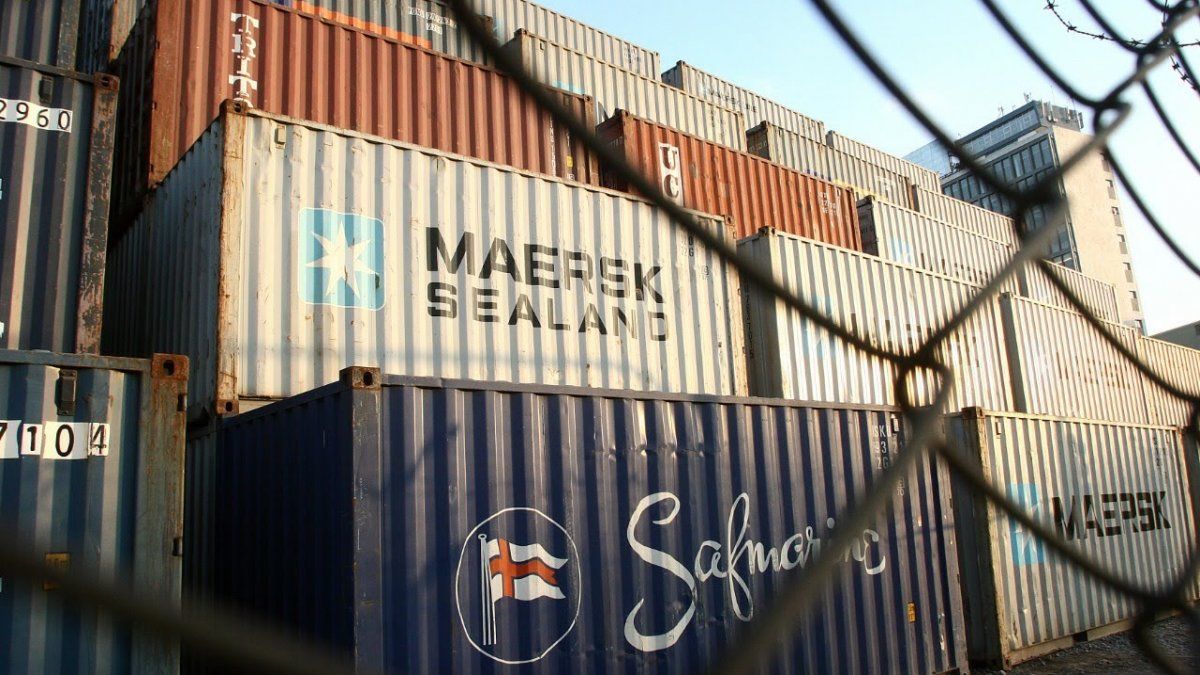As the external restriction and the fiscal deficit are another economic nonsense. Therefore, solving the deficit – adjustment, reordering of spending or heterodox adjustment – is solving part of the external restriction. It is understood that the dollar problem generates a restriction, this lack of dollars generates economic pressures for a devaluation – debate on how to best combine economic policies to overcome it – and that would generate an inflow of foreign currency.
Considering the “capital flight”, on average until 2020 there were 1,500,000 people (human and legal) who bought dollars, during 2020 it exploded to 4,000,000 and from mid-2021 that figure reaches its historical average, but from 2024 the average, in recent months, fell abruptly to 181,000 people. Collection falls. It is only driven by the PAIS tax, presumed minimum profit and foreign trade. The liquidity dilemma at the door.
Back to the point, this is the heterodox manual – bordering on the opposite – because it bases its idea on the famous “export model” – cousin of the “exchange rate lag” activist and uncle of the so-called “lag” – as if it were the solution to all our economic ills. 70% of those who buy dollars are individuals and 30% are legal entities. Question: What do we export? Soybeans and meat were the main export products and we import products with technology – sometimes obsolete in the first world.
To advance with our premise we will use three reports, one is the latest report from INDEC-ICA that in the first half of the current year showed the following information: II-Products of the plant kingdom were exported for 9,166 million dollars; IV-Products of the food, beverage and tobacco industries for 7,005 million dollars; V-Mineral products about 4,263 million dollars; XVII-Transport material for 3,491 million dollars; III-Animal or vegetable fats and oils for 3,458 million dollars; and I-Live animals and products of the animal kingdom for 3,301 million dollars, these are the main export sections of the Argentine productive structure. Many of these products are linked as inputs for livestock -bovine, ovine, porcine, avian- or are exported to feed other livestock or as input for the flour or oil industry.
However, let’s look at what we imported in this same period: XVI-Machines, appliances and electrical materials, their parts and accessories 6,970 million dollars; VI-Products of chemical industries or related industries 5,255 million dollars; XVII-Transportation material about 3,676 million dollars; V-Mineral products 2,405 million dollars; II-Products of the vegetable kingdom 2,155 million dollars; and VII-Plastic, rubber and their manufactures. If we compare this first semester with that of 2023, these main import sections fell between -51.8% (V) and -7.6% (VI). Feature of the economic recession that is occurring Will it turn into an economic depression?
And here is the dilemma of interpretation of some specialists who confuse Primary Products, Manufacturing of Agricultural Origin, Manufacturing of Industrial Origin when considering that exporting MOA or MOI, then We are an industrial nation. Another economic nonsense.
Although it may hurt the ego of some, we export grains, oils, flour and meat. But the confusion is greater because when analyzing imports, which have a better description of the products, we find that they are classified as: Capital goods, intermediate goods, Fuels and lubricants, Parts and accessories for capital goods, Consumer goods and Passenger motor vehicles.
It may be interesting to have a debate about our registration to begin to identify our challenges as a peripheral economy. It is clear that we export agricultural products and finance the production complexes that demand imports.
Why do we have the same challenges in the 21st century as in the 20th century? What is happening with the supply that does not finish innovating, developing and investing in improving the production process and its products? What is happening with our business community? Why have they not identified products that could be substituted, slowly but progressively? Have they become accustomed to buying cheap and selling dearly? Is that productive capitalism? What kind of capitalism is Argentina? Are we not saving foreign currency by substituting imports? Will we be a complementary economy to CHINA?
The external restriction on staying in the idea of currencies and flight believes that the solution is to devalue to improve the terms of trade, and deepen the export modelThe problem is more serious. The structuralists, including Prebisch, already said it: external strangulation: slowness with which primary exports grow compared to the speed with which industrial imports do so; failure to assimilate the technical progress of the centre. internal strangulation It focuses on three: i) the land system that makes it difficult to assimilate the technique, ii) the State’s poor action to adapt and disseminate this technique, and iii) the precariousness of investments. A classic approach: land, capital and labour.
The best way to reverse point ii of the internal bottleneck is to achieve better coordination between the productive sector, universities and the scientific and technological system. Productive development and innovation. This is key in peripheral economies. According to VECTORIAL’s chief economist, Haroldo Montagu, in the report –two– weekly that published, in this first semester, the expenses in Public Universities suffered an adjustment in real terms of 39.8%. Pure blender. Instead, the chainsaw was focused on Capital Expenditures -74.6% -public works- and Transfer to provinces -85.3% (current and capital). As the impact on the economy is such that they put the adjustment in energy subsidies on hold. Laboratories linked to biotechnology require a certain level of electricity for their best performance.
The third report can help us understand that Milei and Caputo’s policy is an Argentina without Science. The Synthetic Panorama of the SNCTI – First Semester 2024 concludes that: The decline in the execution of both the CyT Function -of the budget- and the extinct Jurisdiction 71 – MINCyT, which includes the current ICT Secretariat, CONICET, the R&D&I Agency and CONAE, the retraction has reached 37.7% in real terms. This has been progressive, month by month, with the record worsening in comparison with the previous year in each and every month of the year. This is an adjustment made in just seven months, which is more abrupt than the one carried out in the four years of Mauricio Macri’s administration. The report adds that, “While real wages fell by 24.5% and item 3 (non-personal services, mainly scholarships) fell by 29.6%, investment in capital goods fell by 46% in real terms and transfers (a key item for investment in infrastructure and equipment in universities and organizations, as well as for subsidies for current and capital expenses to the private sector) fell by 61.2%.”.
image.png
On the other hand, the federal programs Equipar Ciencia and Construir Ciencia within the Federalization Program 48 of Science, suppose an intensification of the concentration and the concrete de-federalization of Science and Technology in our country. To conclude the relevant part of this third report we must remember that: “The Law on Bases and Starting Points for the Freedom of Argentines introduced measures that will significantly affect the development of science and technology in Argentina. Although Article 3 of the project limits the possible dissolution of science and technology organizations, these same organizations could suffer, as a result of the wording of Article 52, a virtual total dismantling of their staff, to the extent that the human resources policy of the various organizations that make up the public administration would be made dependent on a generic evaluation..
For all this, Prebisch’s criticism of the idea of external restriction and fiscal deficit is present from the 1963 manifesto: from another point of view, that other concept –external restriction– which still exists in certain environments, According to which external strangulation and the imbalances that manifest themselves in international accounts are merely a matter of monetary conduct has had deplorable consequences, since its practical application – in addition to having a more adverse influence on economic development – has diverted attention from the fundamental solutions that this structural phenomenon demands”.
Economist at UBA, Professor of Latin American Structuralism at UNDAV
Source: Ambito
David William is a talented author who has made a name for himself in the world of writing. He is a professional author who writes on a wide range of topics, from general interest to opinion news. David is currently working as a writer at 24 hours worlds where he brings his unique perspective and in-depth research to his articles, making them both informative and engaging.




